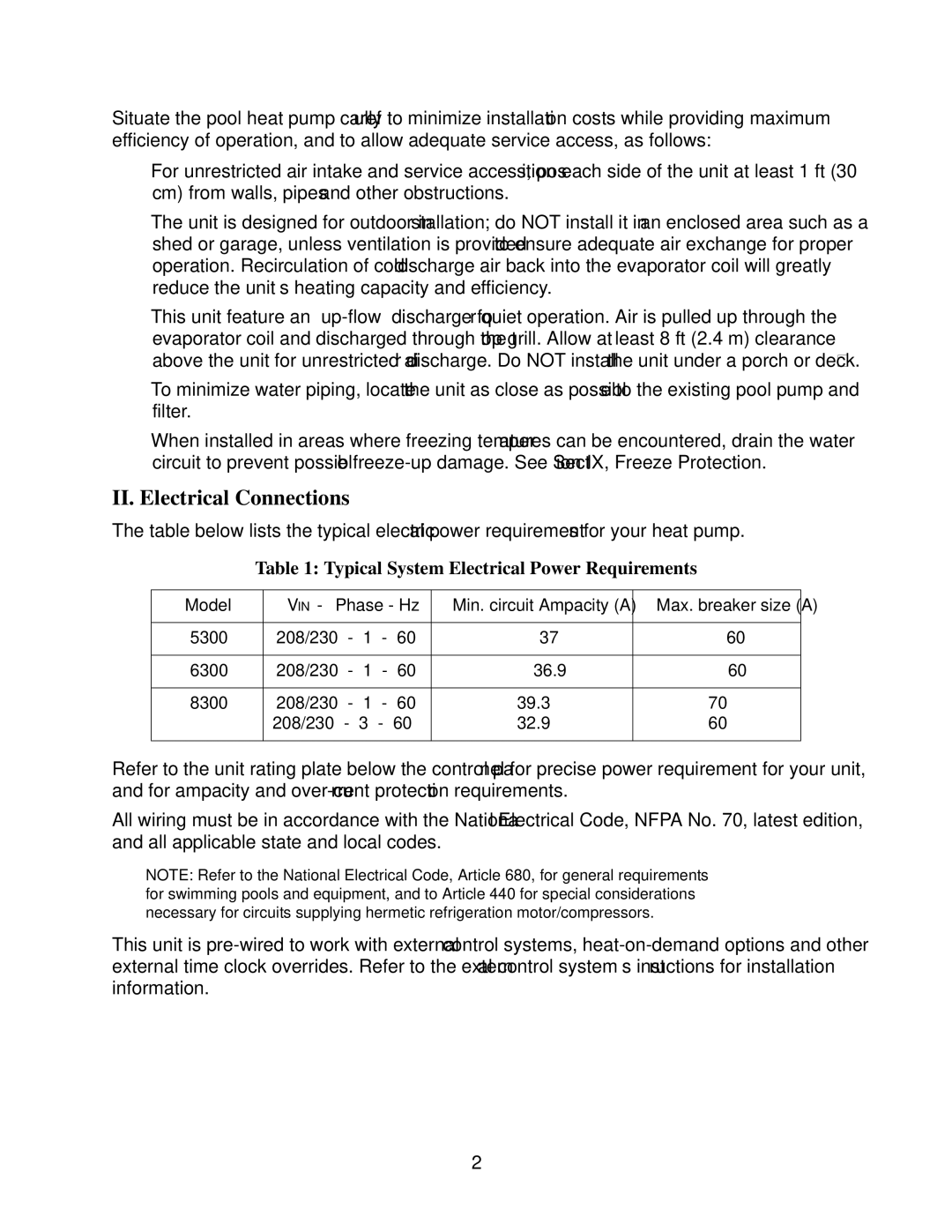Situate the pool heat pump carefully to minimize installation costs while providing maximum efficiency of operation, and to allow adequate service access, as follows:
•For unrestricted air intake and service access, position each side of the unit at least 1 ft (30 cm) from walls, pipes and other obstructions.
•The unit is designed for outdoor installation; do NOT install it in an enclosed area such as a shed or garage, unless ventilation is provided to ensure adequate air exchange for proper operation. Recirculation of cold discharge air back into the evaporator coil will greatly reduce the unit’s heating capacity and efficiency.
•This unit feature an
•To minimize water piping, locate the unit as close as possible to the existing pool pump and filter.
•When installed in areas where freezing temperatures can be encountered, drain the water circuit to prevent possible
II.Electrical Connections
The table below lists the typical electrical power requirements for your heat pump.
Table 1: Typical System Electrical Power Requirements
Model | VIN - Phase - Hz | Min. circuit Ampacity (A) | Max. breaker size (A) | ||||
|
|
|
|
| |||
5300 | 208/230 - 1 | - 60 | 37 | 60 | |||
|
|
|
|
| |||
6300 | 208/230 - 1 | - 60 | 36.9 | 60 | |||
|
|
|
|
|
|
|
|
8300 | 208/230 | - | 1 | - | 60 | 39.3 | 70 |
| 208/230 | - | 3 | - | 60 | 32.9 | 60 |
|
|
|
|
|
|
|
|
Refer to the unit rating plate below the control panel for precise power requirement for your unit, and for ampacity and
All wiring must be in accordance with the National Electrical Code, NFPA No. 70, latest edition, and all applicable state and local codes.
NOTE: Refer to the National Electrical Code, Article 680, for general requirements for swimming pools and equipment, and to Article 440 for special considerations necessary for circuits supplying hermetic refrigeration motor/compressors.
This unit is
2
